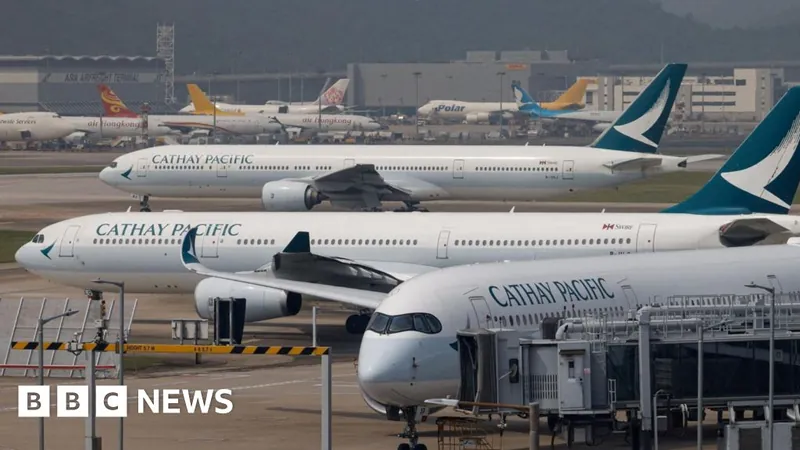
Shocking Engine Fire on Cathay Pacific Airbus: Investigators Reveal Potential Catastrophe!
2024-09-19
Overview of the Incident
In a concerning incident earlier this month, a Cathay Pacific Airbus A350 faced a critical engine fire allegedly triggered by a significant fuel leak. Investigators found that this issue could have led to disastrous consequences for the aircraft, prompting thorough scrutiny of the airline's fleet.
Details of the Flight
The alarming events unfolded shortly after the aircraft departed from Hong Kong, bound for Zurich. The crew experienced an “engine component failure” and quickly turned the plane back, leading to an emergency landing. The plane, which was transporting 348 passengers and crew members, landed without incident, but the root cause of the engine fire has left many anxious about the safety standards of the aircraft involved.
Investigation Findings
According to a preliminary report from Hong Kong's Air Accident Investigation Authority (AAIA), the mishap stemmed from a broken fuel hose within the Trent XWB-97 engine, manufactured by Rolls-Royce—an issue exacerbated by prior damage to multiple hoses. This report has led to a broader investigation into the condition of fuel hoses on the A350 fleet, revealing concerns on an additional 15 aircraft during inspections.
Severity of the Situation
This potential crisis is further illuminated by the discovery that the protective casing of one fuel hose displayed a significant rupture, identified by soot and burn markings, indicative of a fire. Alarming as it may sound, failure to address this problem promptly could have resulted in a catastrophic engine fire, severely jeopardizing the safety of all aboard.
Response from Authorities
In response, the AAIA has urged the European Union Aviation Safety Agency (EASA) to impose stricter inspection mandates on Rolls-Royce, ensuring fuel hoses on the affected engines are rigorously examined and any compromised components are promptly replaced. EASA has reacted swiftly, initially enforcing emergency inspections for operators using Trent XWB engines. Recently, this directive expanded to include a comprehensive inspection regime, acknowledging concerns that a specific cleaning process during engine refurbishment may have contributed to the degradation of fuel hoses.
Actions by Cathay Pacific
Cathay Pacific has not been idle during this crisis; the airline immediately launched a fleet-wide inspection of its Airbus A350s, reaffirming its compliance with EASA's requirements. According to the airline, all assessed aircraft were cleared for operation, with ongoing cooperation among stakeholders—including airframe and engine manufacturers and regulatory bodies—to enhance safety measures.
Impact on the Airbus A350 Reputation
Since its debut in 2016, the Airbus A350 has become a cornerstone of numerous airlines’ long-haul operations worldwide, cherished for its exceptional fuel efficiency and reduced operational costs. However, these recent events could put a cloud over the aircraft's reputation, especially as concerns mount regarding the reliability of the Trent XWB engine.
Conclusion and Future Outlook
As the investigation unfolds, the aviation community remains alert for further developments—could this just be the tip of the iceberg for the safety protocols of the A350 fleet? Only time will tell what additional revelations may come to light. Stay tuned!



 Brasil (PT)
Brasil (PT)
 Canada (EN)
Canada (EN)
 Chile (ES)
Chile (ES)
 España (ES)
España (ES)
 France (FR)
France (FR)
 Hong Kong (EN)
Hong Kong (EN)
 Italia (IT)
Italia (IT)
 日本 (JA)
日本 (JA)
 Magyarország (HU)
Magyarország (HU)
 Norge (NO)
Norge (NO)
 Polska (PL)
Polska (PL)
 Schweiz (DE)
Schweiz (DE)
 Singapore (EN)
Singapore (EN)
 Sverige (SV)
Sverige (SV)
 Suomi (FI)
Suomi (FI)
 Türkiye (TR)
Türkiye (TR)